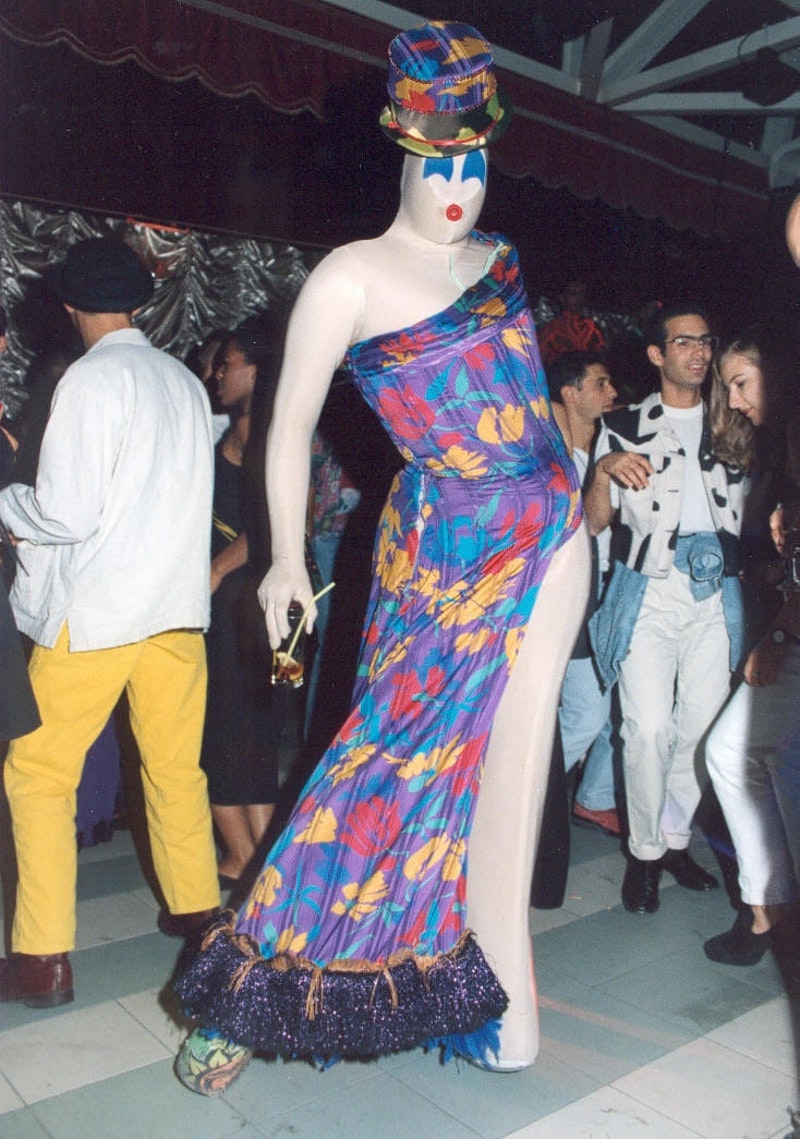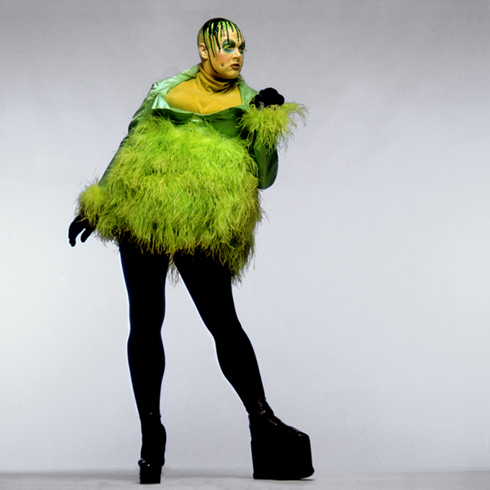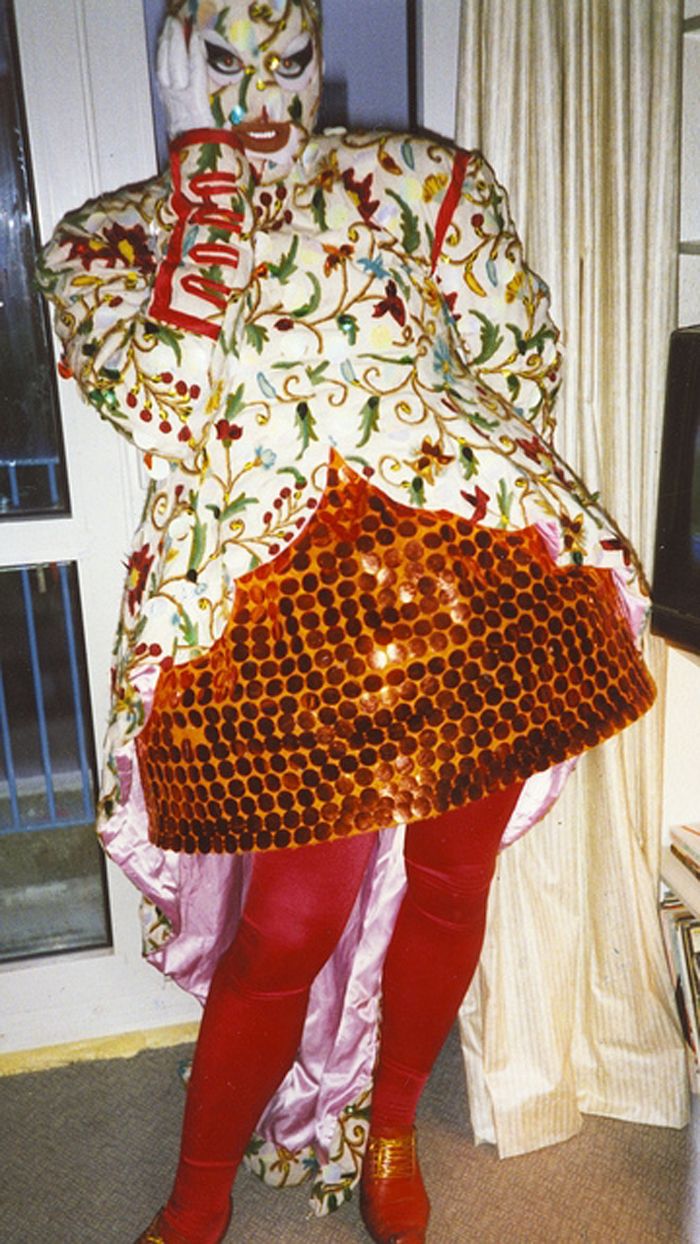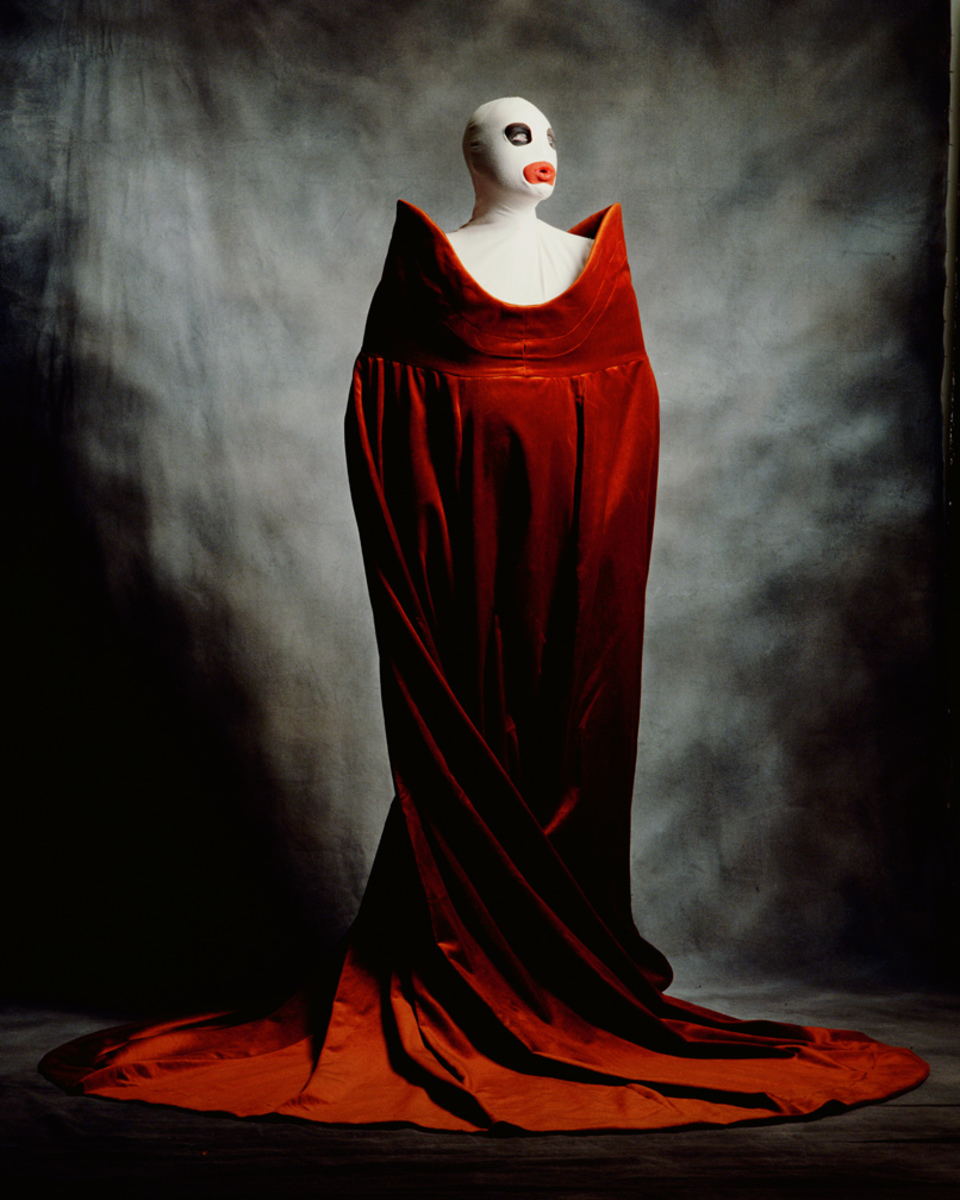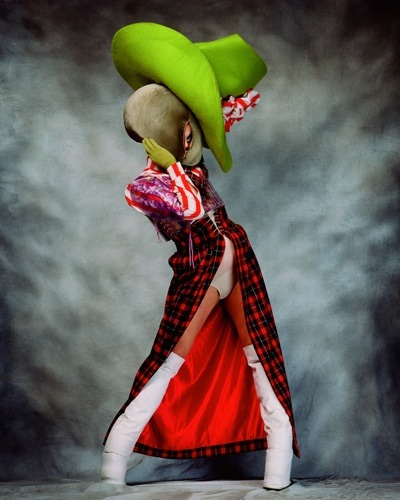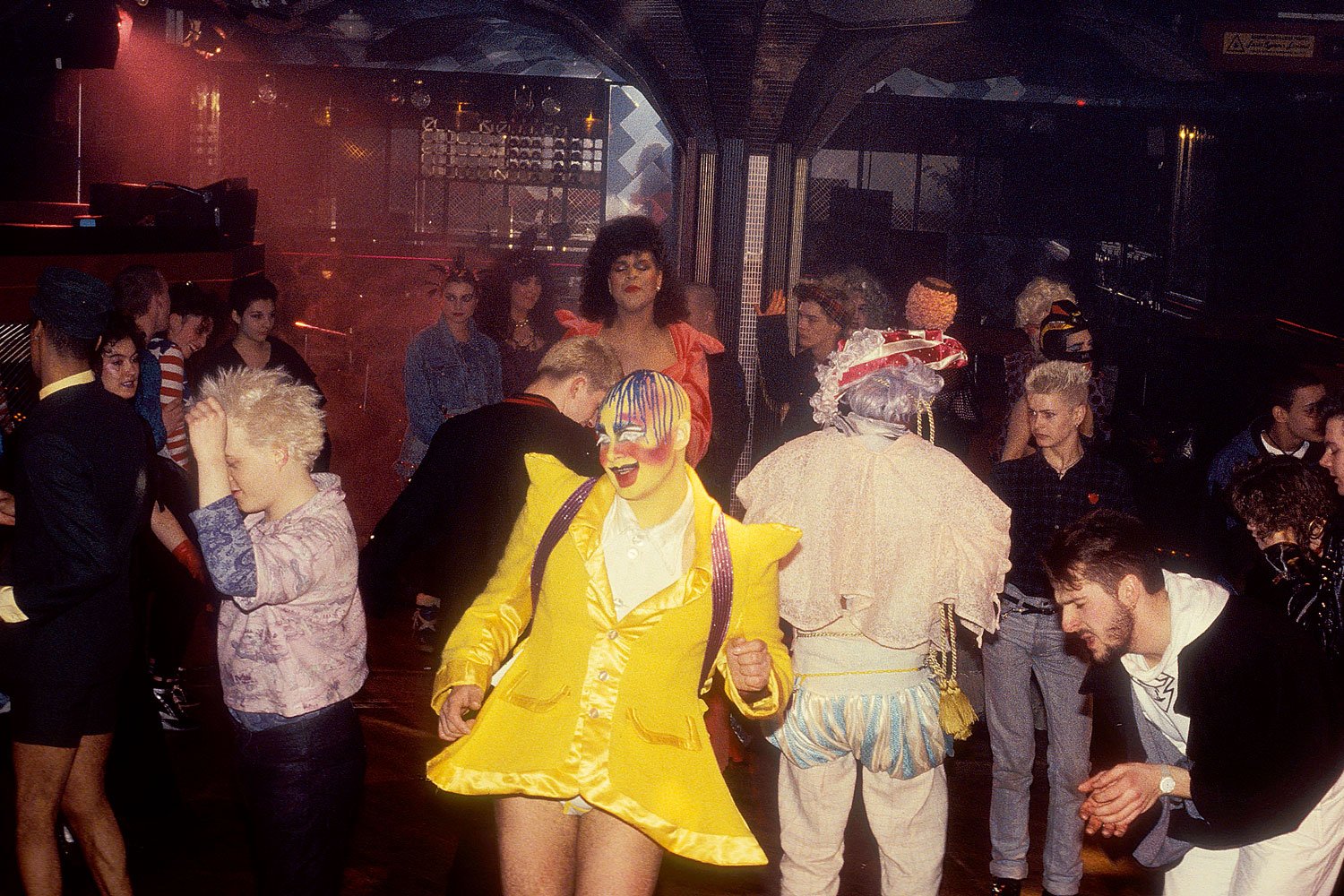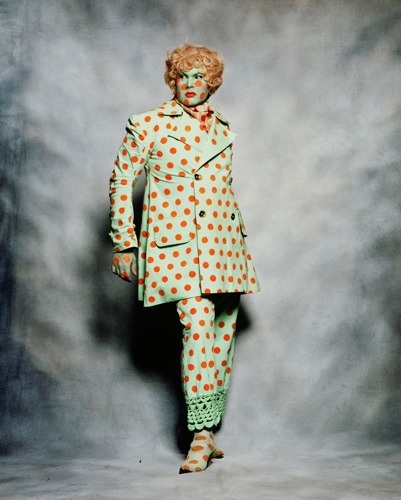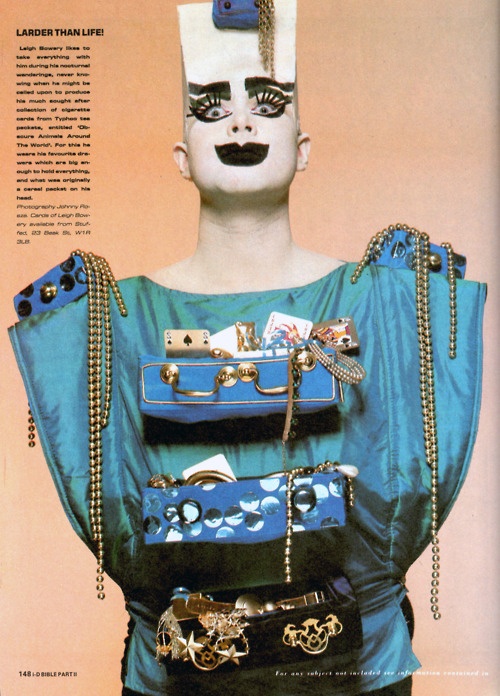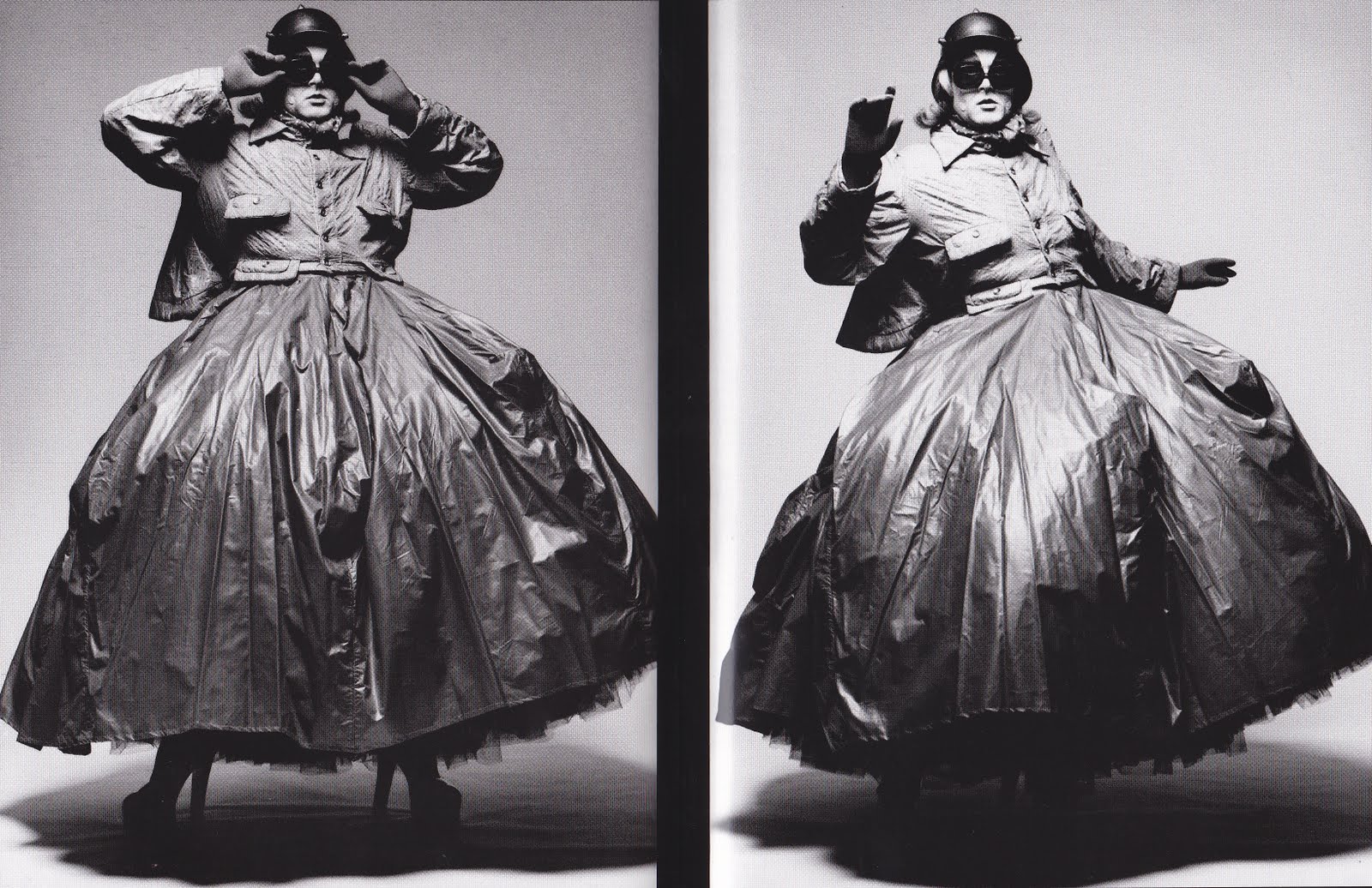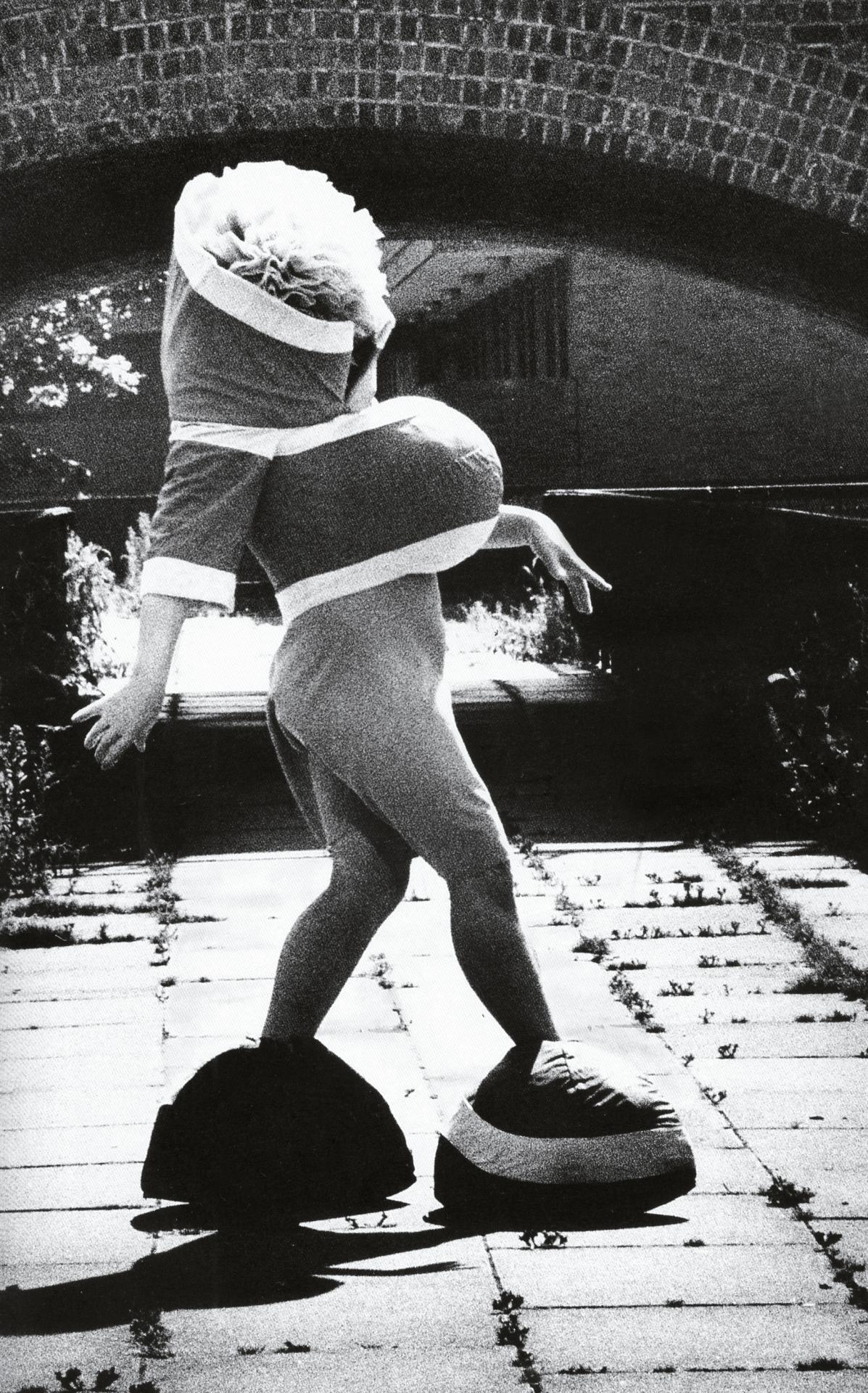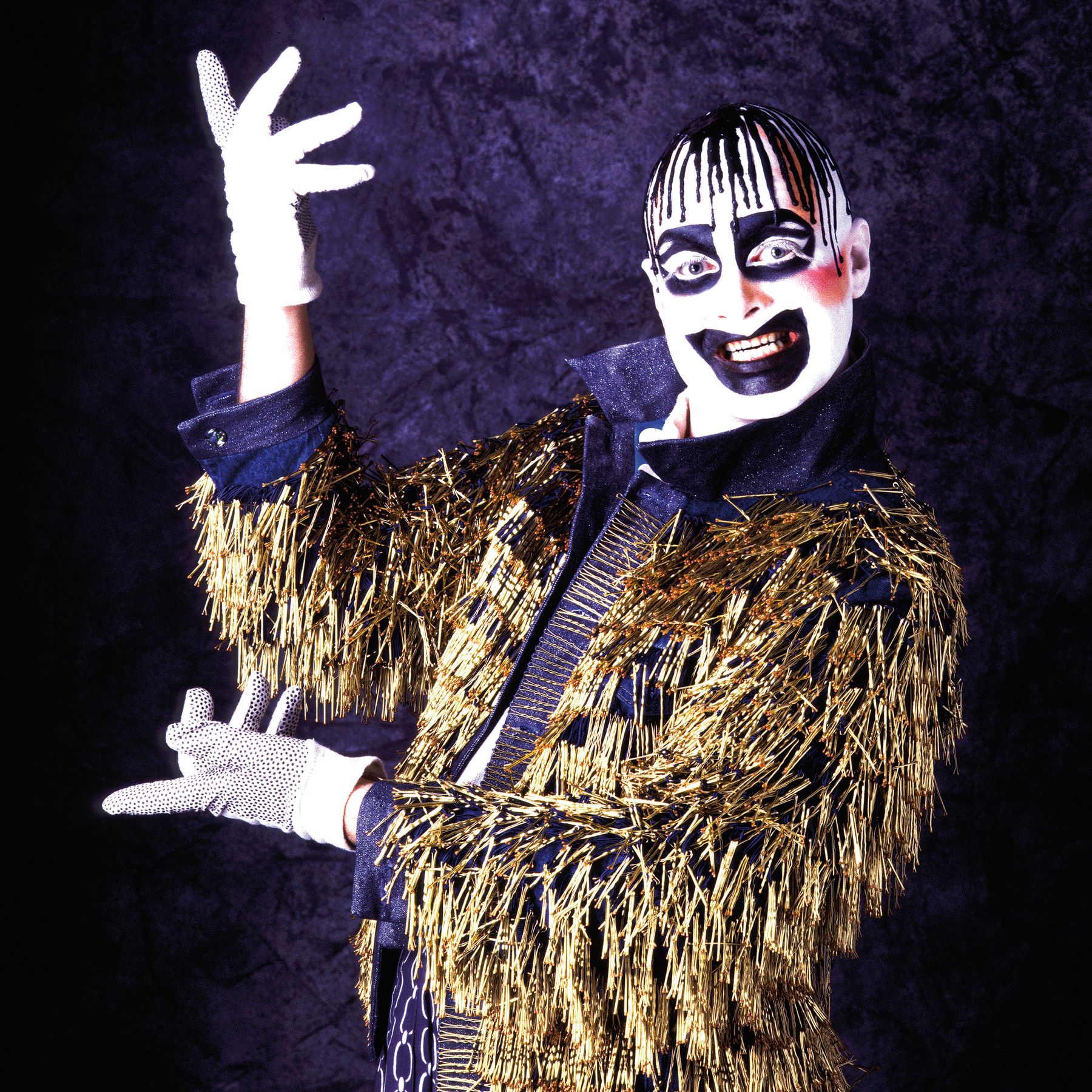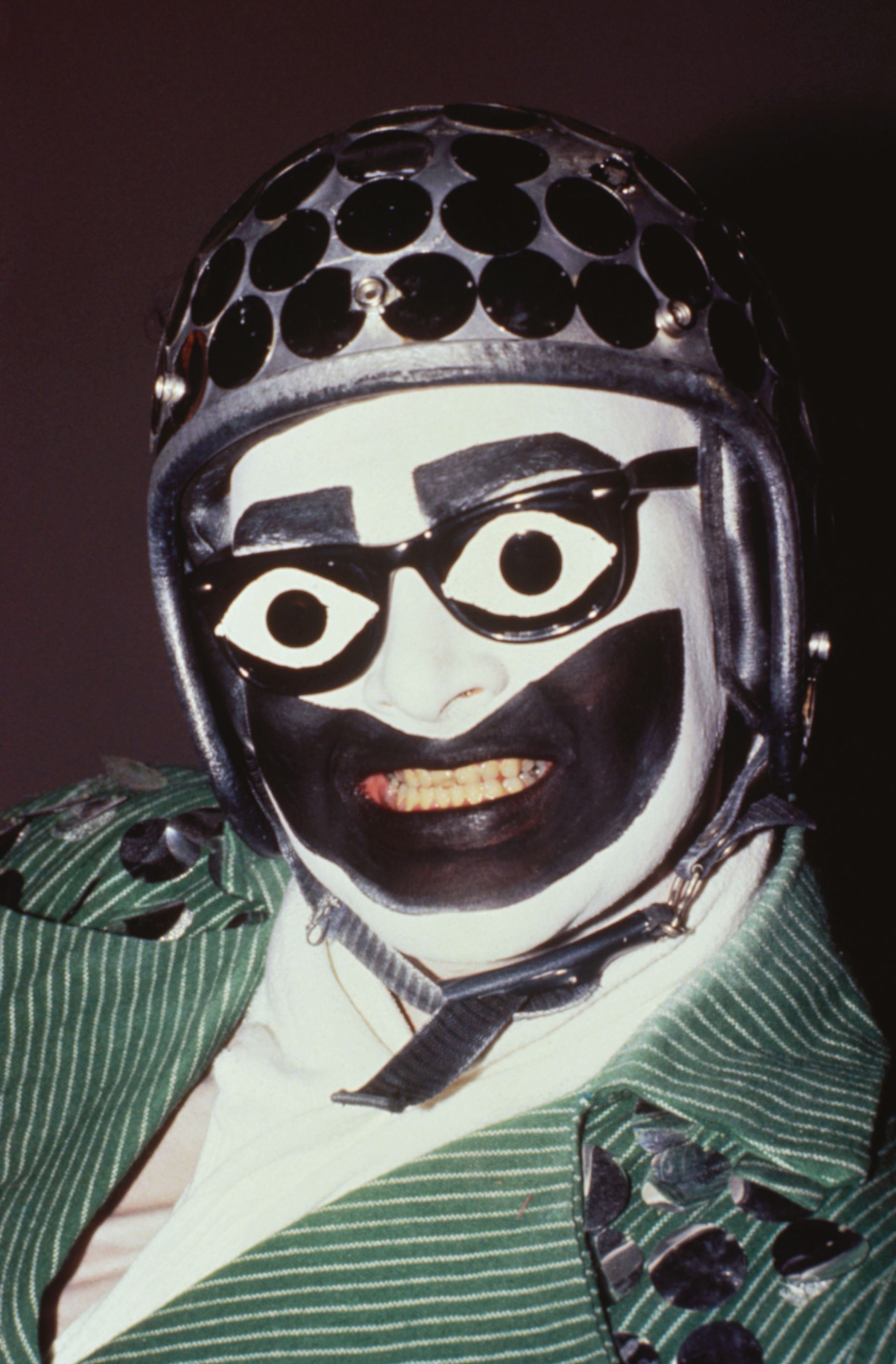Taboo - The Legend of Leigh Bowery
Available from: https://www.ngv.vic.gov.au/essay/taboo-or-not-taboo-the-fashions-of-leigh-bowery/
Thumbnail Image from: https://agnautacouture.com/2014/11/09/the-legend-of-leigh-bowery-part-one/
By Hannah Schmidt-Rees
Leigh Bowery wasn't your average Melbourne-born, London-based designer. Every new look he created was dripping in excess; silhouettes drawn out beyond recognition, overdrawn eyes and lips surrounded by a matching facemask, outlandish fabrics turned into tailored masterpieces. His stage performances were even wilder, even socially unacceptable by today's standards. Bowery 'gave birth' to his wife on stage, emerging naked from being strapped to Bowery's body and attached by a line of sausages as an umbilical cord. Bodily fluids were a fundamental aspect of Bowery's performance art, but rest assured, for this post I'll just be focusing on the fashion.
Whilst Bowery wasn't considered a fashion designer in the most traditional sense, I decided to write this post in the Designers category rather than the Fashion History one. Instead of mainly designing clothes for a brand, a runway or celebrities; he designed clothing for himself. He studied fashion design, showed off his talent and inspired other fashion designers and artists alike; much like other iconic fashion designers. It's like having the skills of a professional baker, but making the cake and eating it too.
“In an age when pop stars, actors, designers – those who traditionally dictated stylistic trends – are almost indistinguishable in their uniformity and blandness, Leigh Bowery stands out like an erection in a convent.”
Born in the small town of Sunshine, Melbourne in 1961, Bowery pursued his dream of becoming a fashion designer at RMIT (Royal Melbourne Institute of Technology). Discouraged and restricted by the nature of his formal study, the glitz and glamour of the New Romantic/Blitz movement in 1980s London caught Bowery's eye, and Bowery moved to London in 1980. Similar to the Club Kid scene of late 1980s New York, the Blitz movement was at its peak in the London nightclub scene, becoming a breeding ground for the most ground-breaking, experimental and gender-bending fashion.
Bowery found the current fashion scene too conservative and restrictive, and the nightclub scene became his muse when creating looks that were never seen before. Each look was created as direct response to his surroundings and only worn once, regardless of how full of complex tailoring and technical difficulty they were. Patterns were made for each garment, constructed strong enough to survive the rigors of a long night of clubbing.
“Fashion, where all girls have clear skin, blue eyes, blonde-blown wavy hair and a size 10 figure, and all the men have clear skin, moustaches, short waved blonde hair and masculine physical appearance, STINKS.”
Leigh Bowery and his work can be easily recognised. His 6"3 form was covered in rolls of boldly patterned fabric (often from cheap fabric stores), often sequinned and bejewelled. Silhouettes and drapery were explored and reimagined; ballgowns, bustles, miniskirts and ruffled layers all becoming signature styles. Makeup was always over the top, bright colours and bold shapes contrasting on every inch of Bowery's skin. The body's natural curves and shapes were celebrated, Bowery's skin was often used as a 'fabric', and pregnant bellies and breasts were occasionally featured.
In 1985, Bowery created a nightclub called Taboo, and became its main ambassador. Situated at Leicester Square, Taboo was the place for the extreme; extreme fashion, gender and personalities. Every person attended Taboo in an elaborate and over top look; as Bowery's dress code was: "Dress as though your life depends on it, or don’t bother." However the party never really started until Bowery arrived in a never seen before look. Unfortunately, Taboo was closed after a year from allegations of drug soliciting, but its legacy is still alive (Bowery's friend, Boy George, wrote Broadway musical Taboo, based on the club in 2004).
In 1990, Bowery's looks significantly changed. His iconic silhouettes, bold fabrics and gender-breaking focus transformed into surreal and strange silhouettes using simpler fabrics and more 'structural' construction. Bowery used fashion to transform and distort his body, to rewrite himself into alien creatures; deformed, pregnant or with breasts. Some called it fundamentally ground-breaking, others called it 'visually disturbing'. Bowery used the medium of fashion to create wearable art, breaking boundaries of what fashion was and what it could become. This is also the time of Bowery's performance art.
Since his death in 1994, Bowery's avant-garde approach to fashion is still considered just as influential and unique as it was in the 1980s. Now internationally recognised a major style icon of the twentieth century, Leigh Bowery was one of only three Australian designers to be featured in Phaidon's The Fashion Book, a publication featuring 500 of the most influential designers of the past 150 years. Like I said before, Bowery's success as a designer is not due to his runways or brand, it was because of his infusion of complex tailoring and completely original concepts.
Available from: http://www.newnownext.com/michael-musto-leigh-bowery-call-me-by-your-name-oscars/01/2018/
It’s often unknown, but Bowery's influence stretches further than one may realise. Alexander McQueen, Charles Jeffrey, Richard Quinn, John Galliano and Vivenne Westwood are just a few designers that have referenced Bowery in their work. Bowery was also a major figure in the 'Tranimal' movement (A movement focused on surrealist and animalistic interpretations of drag queens). Even English painter Lucian Freud used Bowery as a model, painting him in his most natural and naked form in the early 1990s.
Leigh Bowery is the epitome of originality. Many call him and his works; over the top, visually disturbing and obscene, and I don’t blame them, they are excessive and exaggerated. It certainly isn't for everyone, but I believe that his sheer creativity and influence needs and deserves to be respected. He created looks that were never seen before, explored themes and concepts that never were never incorporated into fashion and rewrote the nature of gender-bending and drag. Leigh Bowery created the unimaginable and the impossible. The confidence and creativity of Leigh Bowery is a quality that something that I would love to possess, and I would love to see it more in the future of fashion.

